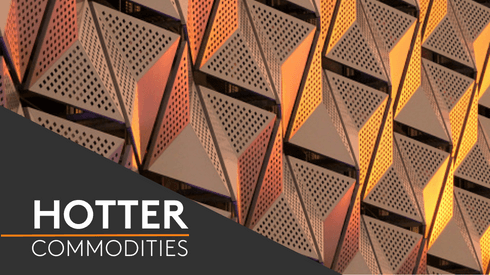“Macroeconomic factors such as land war in Europe [between Ukraine and Russia], conflict in the Middle East [between Israel and Hamas], the highest rates of interest and inflation in decades, underinvestment, and the energy transition [to renewable fuels], have all affected the markets,” he said.
Rahim emphasized the effect of a strong US dollar on base-metals markets, noting that “big moves by the dollar can outweigh even the most compelling [market] fundamentals.”
Markets can have very low stock levels and yet prices fail to react, because they are ultimately dependent on the dollar and its strength, he said.
Once the dollar weakens, prices can begin to react to fundamentals, he said.
The US Dollar Index was at 106.47 on October 16, after hitting a peak of 107.35 on October 3 this year.
This has been weighing on the base-metals complex, with the three-month copper contract on the LME recently at $7,990 per tonne, down from $8,500.50 per tonne at the beginning of September, in part due to pressure from the higher US dollar.
“Recent dollar strength has [made it] the subject of ‘safe haven’ demand, following the geopolitical tension in the Middle East. Strong US economic numbers recently have continued to fuel the narrative that the US Federal Reserve [bank] could impose one last [rise in interest rates],” Fastmarkets analyst Andy Farida said.
The strong dollar has an inverse effect on risk in assets such as copper. But the recent effects on the already weak copper prices were caused by other dynamics too.
“The strong dollar has an inverse effect on risk in assets such as copper. But the recent effects on the already weak copper prices were caused by other dynamics too,” he said.
“Certainly, a strong dollar environment is not a conducive backdrop for risk managers to add to their copper exposure,” he added. “Copper demand out of China is the other major factor [besides the strong dollar]. And the megatrends of green energy and other economic indicators, which suggest that robust global economic recovery are far from positive, [are] putting a lot of bearish pressure on copper [as a result].”
Weak manufacturing hurting European commodity markets
Poor manufacturing output in Europe was also affecting the base-metals markets, Rahim said.
He noted that Germany’s purchasing manager’s index was currently lower than it was during the energy crisis, and almost as bad as it was during the Covid-19 pandemic.
“Germany in particular is very exposed to energy costs, [putting pressure] on energy-intensive industries in Germany,” he said.
Demand for base metals such as aluminium has been affected by a major contraction in Germany’s automotive industry, a key consumer of the light metal. According to the German Association of the Automotive Industry (VDA), production dropped by 30.6% to 266,800 vehicles in August 2023, from 384,738 vehicles in June. It had shown some strength at the beginning of the year. with more than 438,500 vehicles produced in March.
Fastmarkets assessed the aluminium P1020A premium, in-whs dp Rotterdam, at $215-225 per tonne on October 13, down by 18% since September 1.
Meanwhile, China was going through an “economic transition,” Rahim said.
Capital formation measures such as investment, manufacturing and property development have been replaced by a focus on high-value household consumption sectors.
The take-up of new energy vehicles and renewables were main objectives, but the East Asian country was still “in a transition phase,” Rahim said.
Despite the weak Chinese property sector, Rahim said that there was still “record demand across commodities” because of the expansion into new technological areas.
The fastest growth in China’s exports was being seen in batteries, electric vehicles and solar panels, he said, adding that the country was looking for more production in these sectors.
“This is part of the transition within China that is feeding into the broader energy transition narrative,” he said. “China is looking to [take the lead in] higher-value sectors.”




